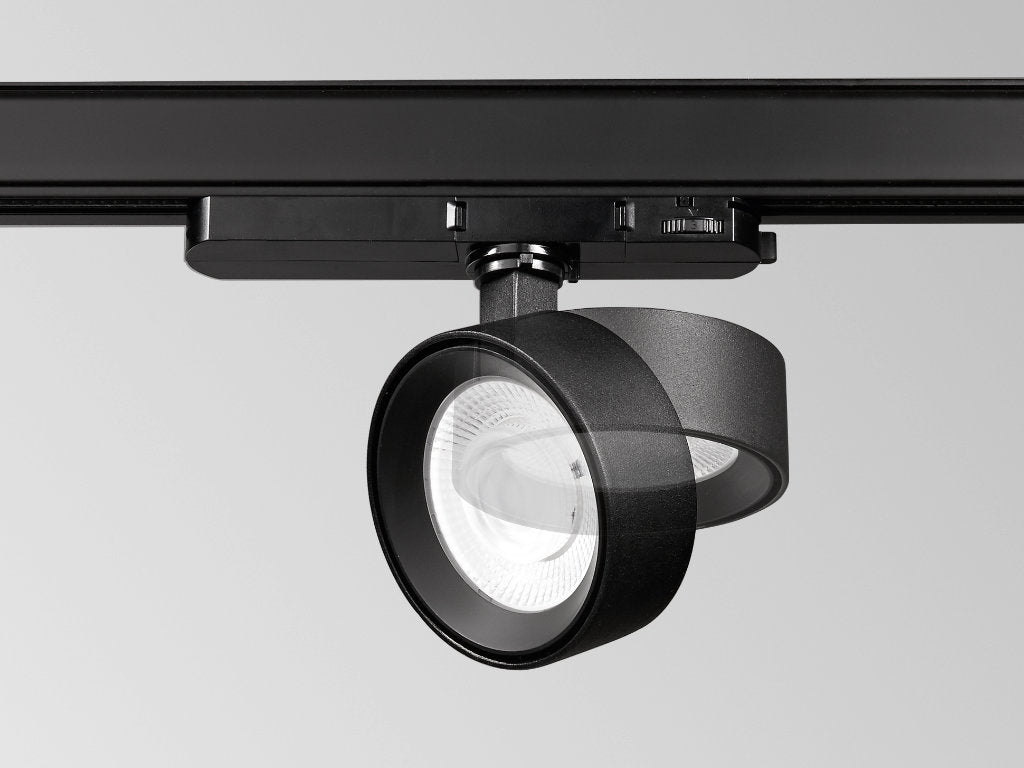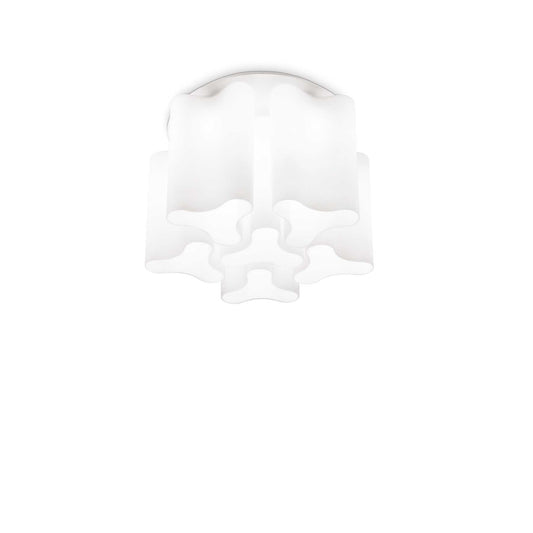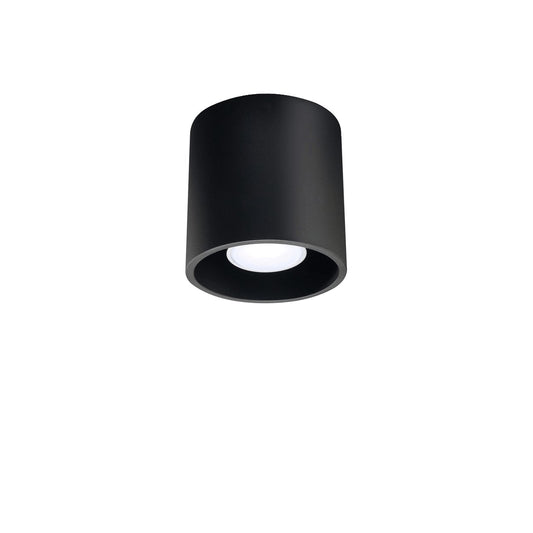Table of Contents
When it comes to creating a kitchen that’s both trendy and functional, the type of lighting that you opt for is one of the most important aspects to consider. Given the wide range of lighting styles on offer (e.g. recessed lights, flush mounts, under-cabinet lighting), mixing different lighting types is a fantastic way to give your space a unique ambiance whilst also making it an intuitive and functional space.

What Design Principles Should Be Adopted for Low Kitchen Ceilings?
At first glance, low kitchen ceilings can present a host of problems – opting for the wrong design choices can leave spaces feeling cramped and cluttered. However, with the right use of colours, lighting and furniture, spaces with low ceilings can be opened up and feel much larger and more comfortable.
Layering Lighting
To create visual space and a comfortable ambiance in any kitchen, one of the most popular and effective low ceiling kitchen lighting trends is opting to layer different styles of lighting. Through strategically choosing and placing different types and styles of lighting, you can create an environment that’s both more inviting and functional – here’s how:
Ambient Lighting
Ambient lighting is the backbone of any lighting in a space, providing the overall brightness that you can see in most rooms. In rooms with low ceilings, both recessed lights and flush-mounted downlight features are fantastic options that will help to give your kitchen that extra sense of height. The key is to select lighting with a low profile to maintain head height.
Task Lighting
Task lighting is a more functional area of lighting which serves to shine light on key areas of the kitchen, such as a sink, hob or a cutting area. This form of lighting is a great way to make your kitchen a more functional and fashionable space, as the focused light can provide extra visibility when completing tasks around the kitchen such as preparing food or washing dishes. Opting for styles such as extendable wall and ceiling lights offers ultimate flexibility as you are able to control the extent of the arms reach for both in use and out of use purposes.
Accent Lighting
If you have certain aspects of your kitchen that you really want to show off, then accent lighting can be a fantastic option. Strategically placing lights near focal points of the room (e.g. shelves or artwork) can highlight different points of interest, helping to stretch out the room visually and distract from any low ceilings. Under cabinet lights are one of the most popular accent lighting option and help to draw attention away from the ceiling height, making the space feel larger.
How Much Is Too Much: Layering Light Overkill?
Layering light, when done right, can create a unique ambience and make the smallest of kitchens feel larger and more luxurious. However, it can be easy to get lost in the details and over-do it, which leads to the opposite effect – a kitchen that feels smaller, visually cluttered and confused.
In smaller kitchens, a good rule of thumb to follow is to always have an ambient light feature, and then opt for either accent lighting or task lighting depending on your unique needs. If you value visibility and functionality more, task lighting may be a better fit for you, however, if your kitchen has some unique, aesthetic focal points that you want to highlight, accent lighting sounds like an excellent choice.
Is My Ceiling Too Low for a Pendant Light?
Pendant lights that hang from the ceiling are a common stylish lighting option, but in kitchens with low ceilings they may occupy too much visual space and make the room feel small and visually cluttered. When it comes to deciding if a pendant light is a good fit for your space, there’s a few key aspects to consider:
Practicality
Given that pendant lights hang quite low from the ceiling, it’s important to ensure that where you plan to place your light doesn’t obstruct any movement or pose a safety hazard. In a busy room like a kitchen, this is essential – common practice is to leave at least 7 feet of space between the pendant light and the floor.
Scale
The size of your pendant light also plays a key role in determining whether it’ll be a good fit or not – whilst larger pendants may make a small room feel even smaller, sometimes a smaller pendant light may be a suitable fit for a kitchen with a low ceiling.
Lighting Types to Consider
If pendant lights aren’t a suitable choice for your space, there’s plenty other small kitchen lighting solutions that’ll help you turn a room with a low ceiling into a warm, inviting and functional space.
Flush Mounted Ceiling Lights
For a lighting style that’ll make the most of a small space, flush mounted ceiling lights are a great choice. The flush nature of these low-key fixtures ensures that they stay snug to your ceiling, taking up less space in your kitchen and ensuring that the room feels airy and spacious.
For an added twist, directional ceiling lights can create another visually striking element in the room and cast light on different focal points of the room, making them an excellent addition for either ambient or accent lighting.
Recessed Lighting: Dos and Don’t for the Kitchen
Similar to flush mounted lights, recessed lighting is a fantastic style of lighting for low ceiling kitchens, as they take up virtually zero visual space and can help to provide versatile light for the entire kitchen. Here are some of the most important things to do and not to do when working with recessed lighting.
Plan
When placed sparingly and tastefully, recessed lights make an excellent addition to any light layering system. However, it’s important to how many lights will be used, and where they will be placed, as strategic placement can help to highlight your kitchen’s key areas.
Often, recessed lighting will be placed 600mm off kitchen walls as this aligns perfectly with the depth of most kitchen worktops.
Task Lighting
One fantastic way of planning your recessed lighting is focusing on where the most activity happens in your kitchen. Placing recessed lighting above the areas where you eat, prepare food or wash dishes ensures that your kitchen is very functional.
One great option for task lighting is opting for a directional spotlight or adjustable spotlight, which allow you to ensure that the fixtures light the correct areas.
Co-ordinate
Carefully consider how the recessed lighting will interact and compliment other forms of lighting in your kitchen. If the lighting is inconsistent and incoherent in your kitchen, it’ll subtract from the room’s ambiance significantly.
Overcrowd
When working with recessed lighting, less can be more. Place it tactically in the areas where it will be most functionally or aesthetically appropriate for your unique needs.
Rely Upon
Neglecting ambient lighting and focusing on recessed lighting may lead to uneven shadows around the room, so it’s essential to create a balanced and cohesive lighting system in your kitchen.
Forget Angles
Remember to check the beam angles of your recessed lighting – some fixtures may have narrower beams, which create more concentrated and focused lighting, whilst others may have wider beams that provide wider yet less concentrated illumination.
Track Lighting: Kitchen Placement
Track lighting offers clean lines, a modern, minimalist aesthetic and the ability to alter the angles of the lighting attached to ensure that you have optimal lighting for any tasks that you may be doing in the kitchen. They are a fantastic choice if you are looking to create a more modern, refined ambiance within your kitchen.

Under Cabinet Lighting
Much like recessed lighting, under cabinet lighting doesn’t occupy much space, is excellent for task lighting and can be customised to fit your unique needs. They come in various shapes and sizes, such as LED light strips, puck lights and linear bars, making them a great choice for a range of styles.
Wall lights for Kitchen
When choosing kitchen wall lights, it can be helpful to follow the same rules as with ceiling lighting – if you are working with a smaller space or want to make the room appear larger, opt for smaller kitchen wall sconces or flush lighting. However, if you’re working with a larger space, larger options such as wall-mounted pendant lights or customisable articulated wall lights can be a fantastic way to bring some flair and character to your kitchen.
FAQ
Common questions answered




